Delivery Date: Sunday, February 14, 2021 14:00~
Recording Location: Osaka City Central Public Hall, Conrad Osaka, Dojima River and Tosabori River
Direction: Naohiro Ukawa (“Current Artist” / presided over by DOMMUNE)
Performance: Salyu (vocalist)
Playing: Tomoko Kasai (marimba player), Noki Inoue (flute player of the Osaka Philharmonic Orchestra)
The final 9-day night and day program series on the “Creative Experimental Island” is a Nakanoshima promotional work featuring music performances by Naohiro Ukawa and vocalist Salyu.
What kind of scene did Mr. Ukawa's unique Nakanoshima theory and sharp insights, Salyu's unique performance, and the chemical reaction of encountering the cityscape of Nakanoshima create?
In this report, we will introduce a little bit of Ukawa's intention of production and behind the scenes of shooting, as we look at the distribution archive by all means.
First of all, Mr. Ukawa selected three songs from a unique perspective, along with three places that symbolize Nakanoshima as a composition of the performance.
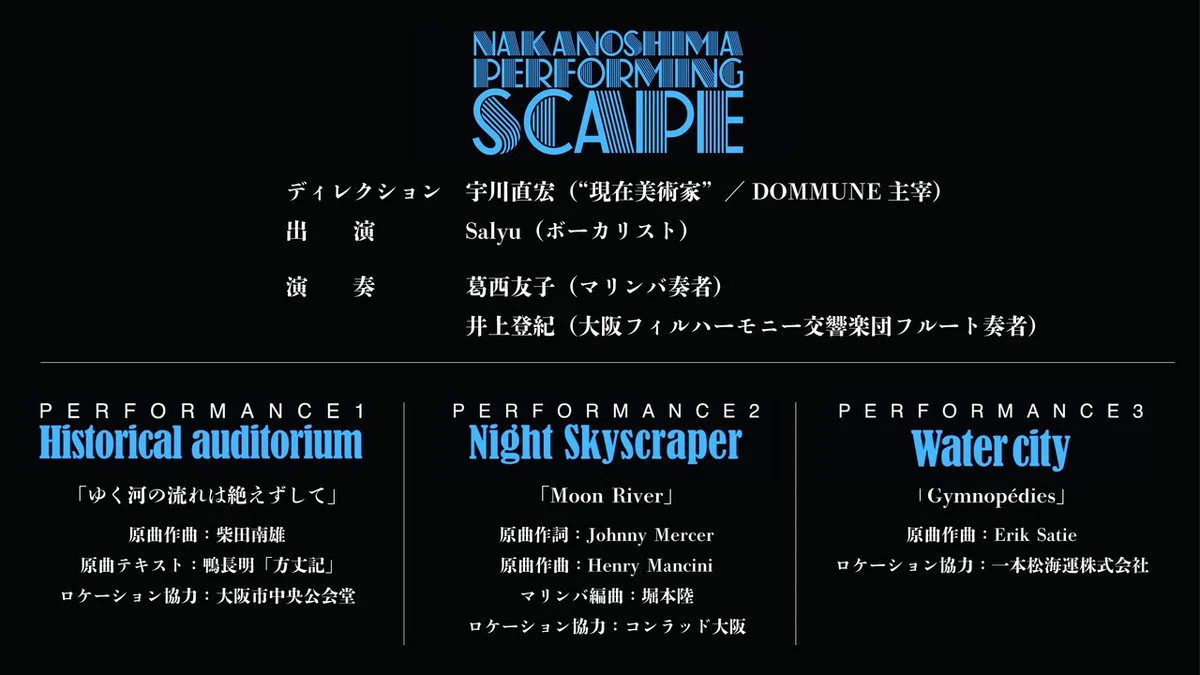
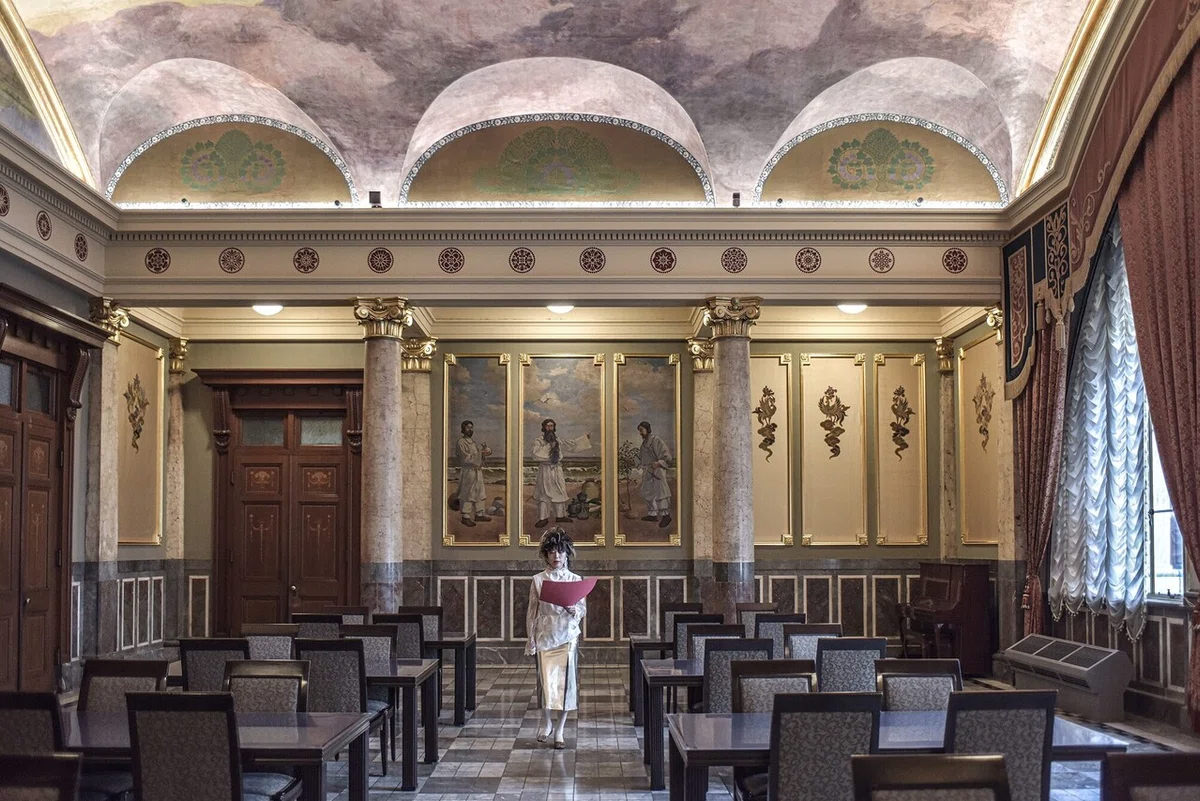
The stage of the first "History auditorium" is Osaka City Central Public Hall. Completed in 1918, Osaka City Central Public Hall is a symbol of Nakanoshima, which is now designated as a national important cultural property. The beginning of the video begins with Salyu, who appears in a special room in Osaka City Central Public Hall, reads Kamo Nagaaki "Hojoki".
“The flow of the river that goes is constant, not in the original water.
The song that floats in the stagnation disappears and connects, and does not stop for a long time. "
From Kamo Chomei "Hojoki"
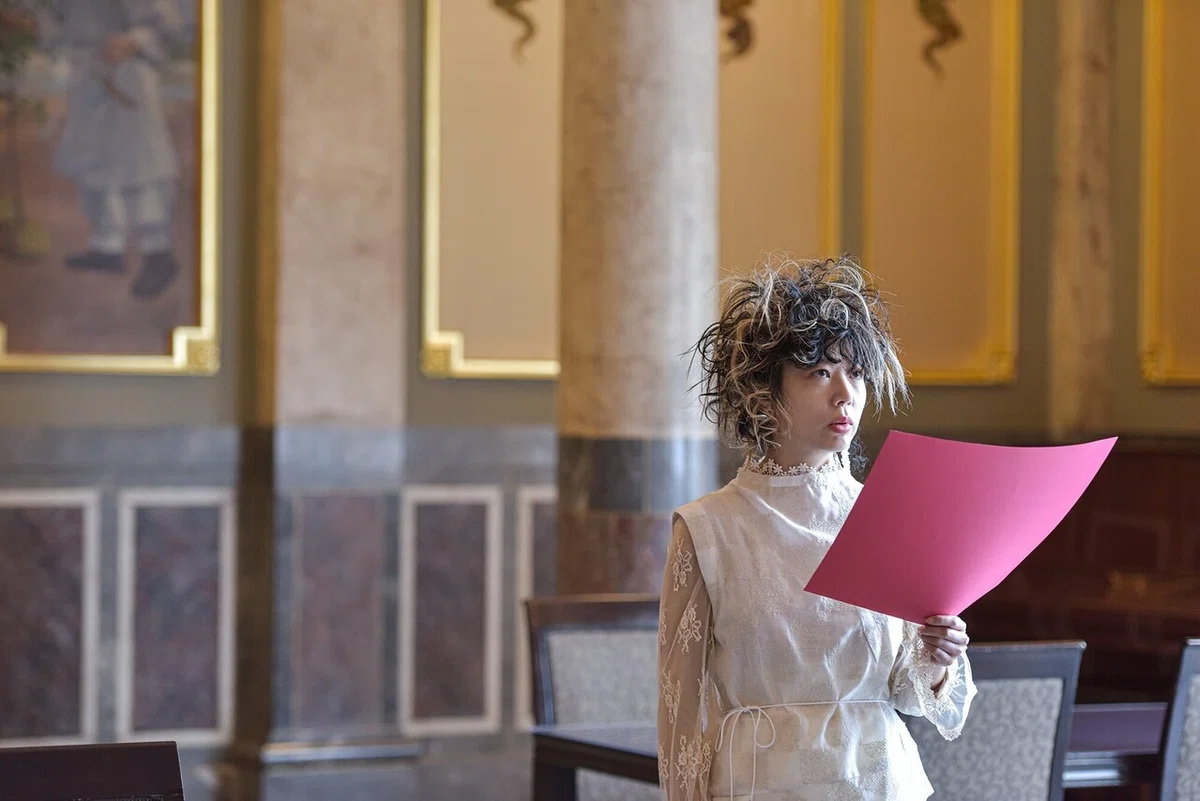
"The ceilings and walls of this room depict myths related to the creation of Japan in a Western style. I felt like a fusion of the world view or a collage-like space is an important place that symbolizes Nakanoshima," says Ukawa.
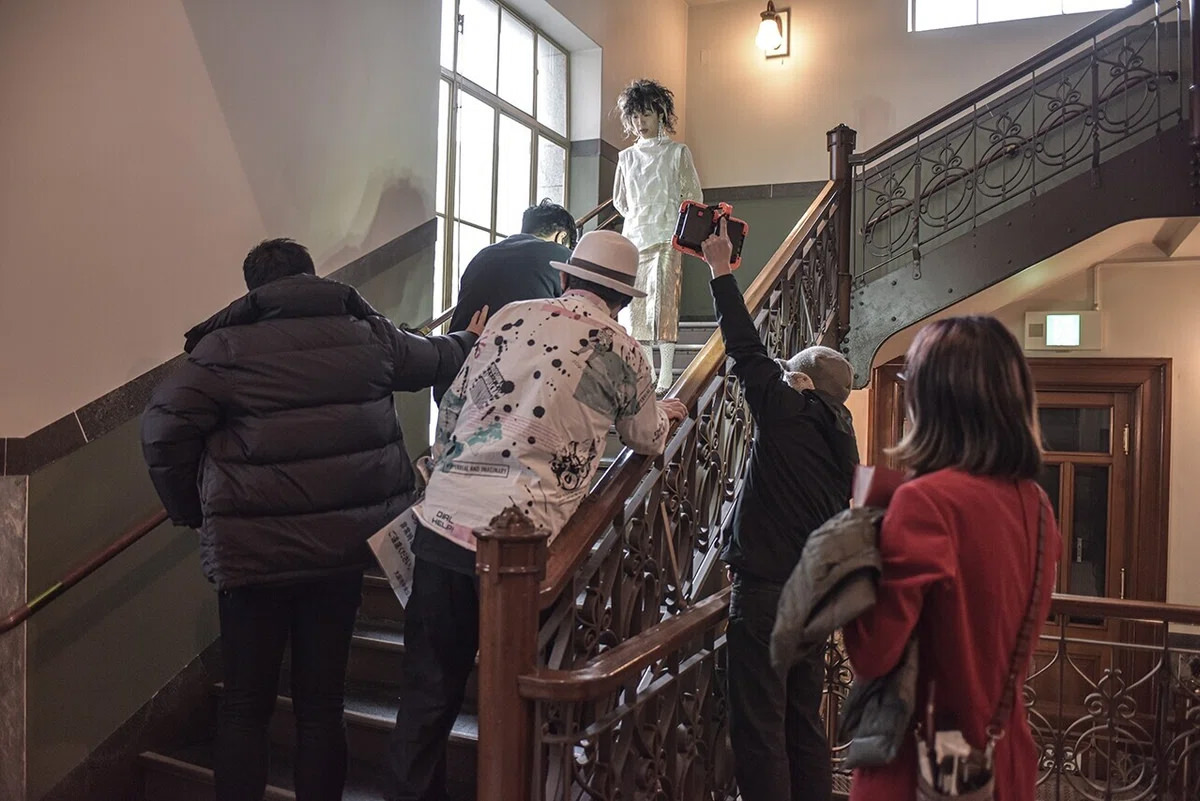
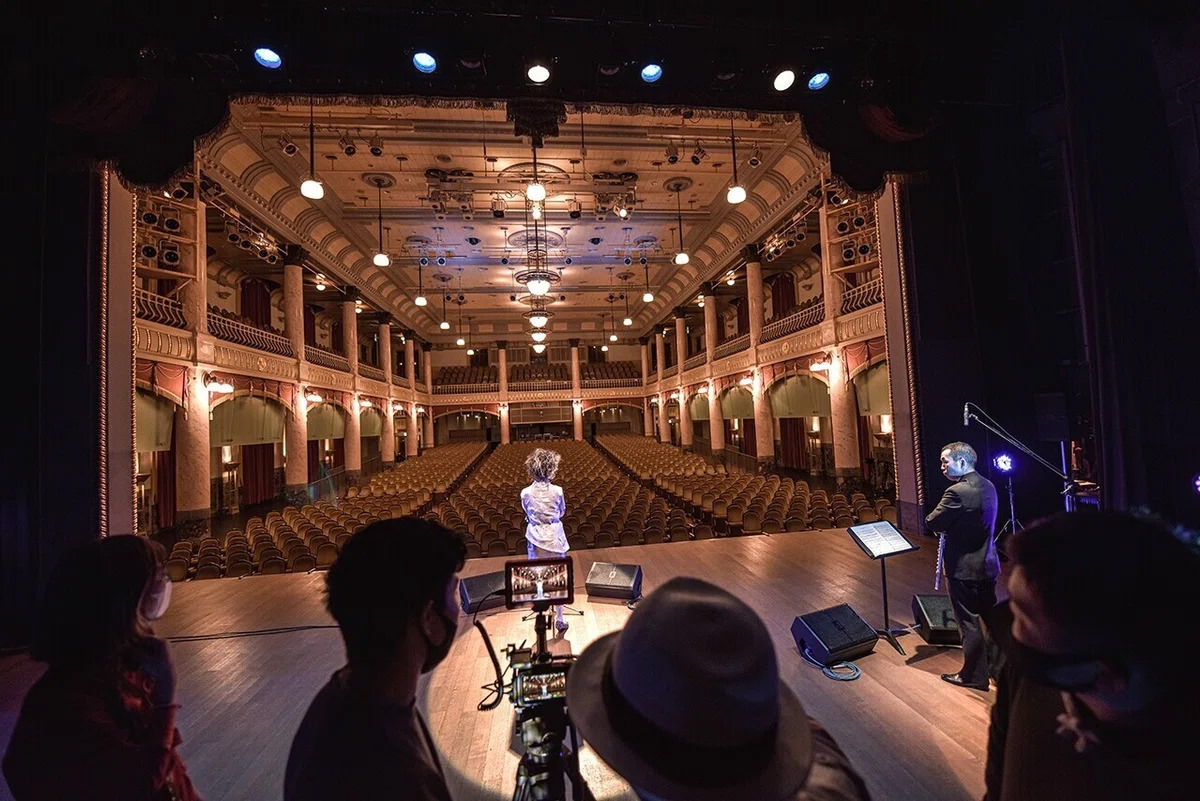
The original song played in the interior space of this historical architecture is "The flow of the river is constant" by Minao Shibata, who was created based on the text of "Hojoki" in 1975.
Toki Inoue of the Osaka Philharmonic Orchestra examined the flute and sang by the divine Salyu, the world view of the classic "Hojoki" on the theme of the avant-garde symphonies in contemporary music, as well as the constant view of the daily life that continues to be updated.
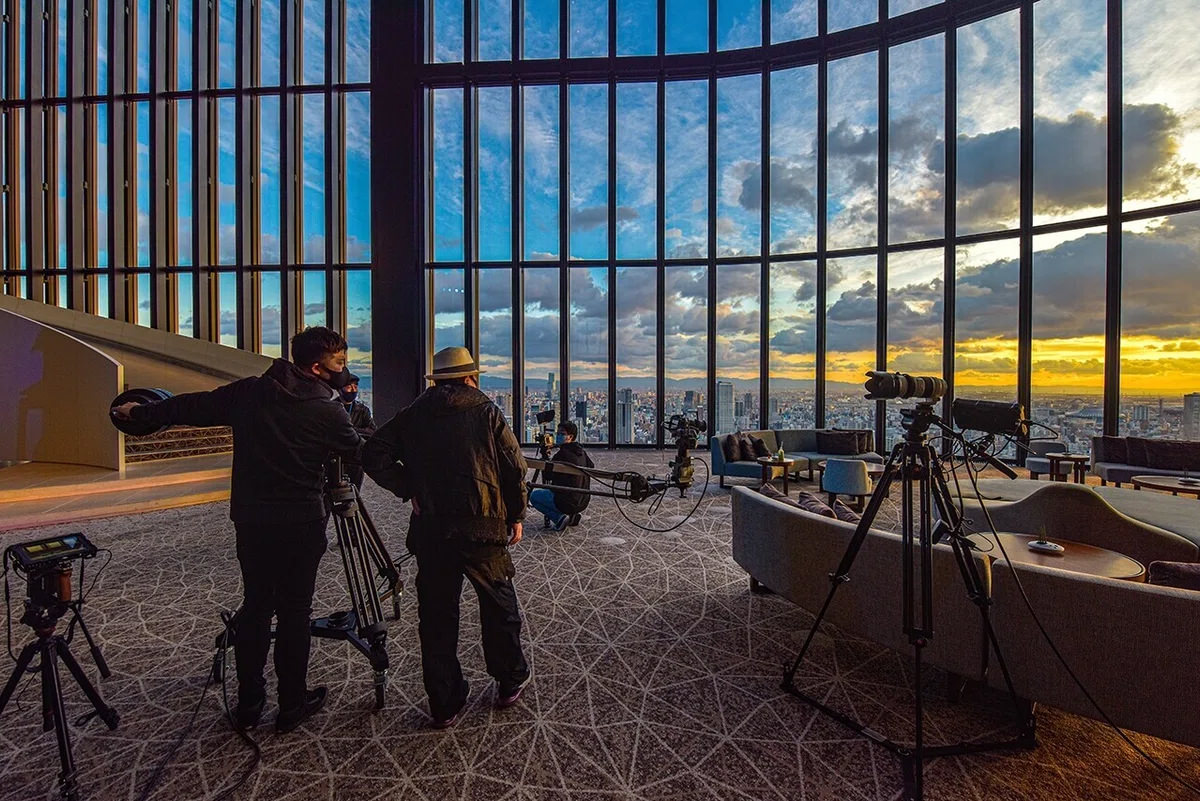
The second movie "Night Skyscraper" is set at the lobby of Conrad Osaka on the top floor of a high-rise building and the night view from there.
The Festival Tower, built in 2017, is located in the center of Nakanoshima, about 3 km east-west, and symbolizes contemporary space and urban infrastructure symmetrical to Historic buildings.
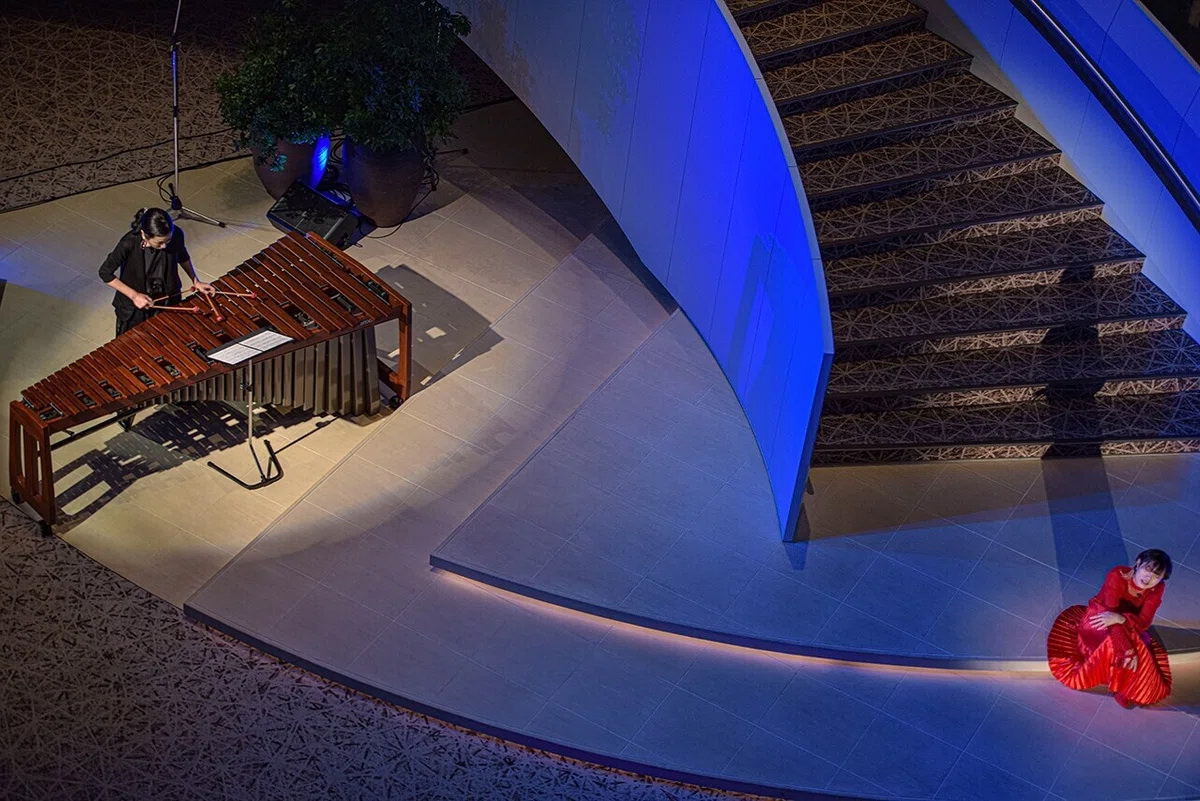
"I couldn't think of a song other than this song that was the best river theme for this luxury and special lobby space," says Ukawa. "Moon River" is a masterpiece sung by Audrey Hepburn in the 1961 film "Breakfain at Tiffany" and has been covered and loved worldwide.
Guided by Tomoko Kasai, who plays the intro of famous songs that have been interpreted independently in marimba, a simple but far-reaching melody consisting of only 10 verses rings while echoing in the night scenery by Salyu's overwhelming singing voice, making you feel the existence of magnificent space-time.
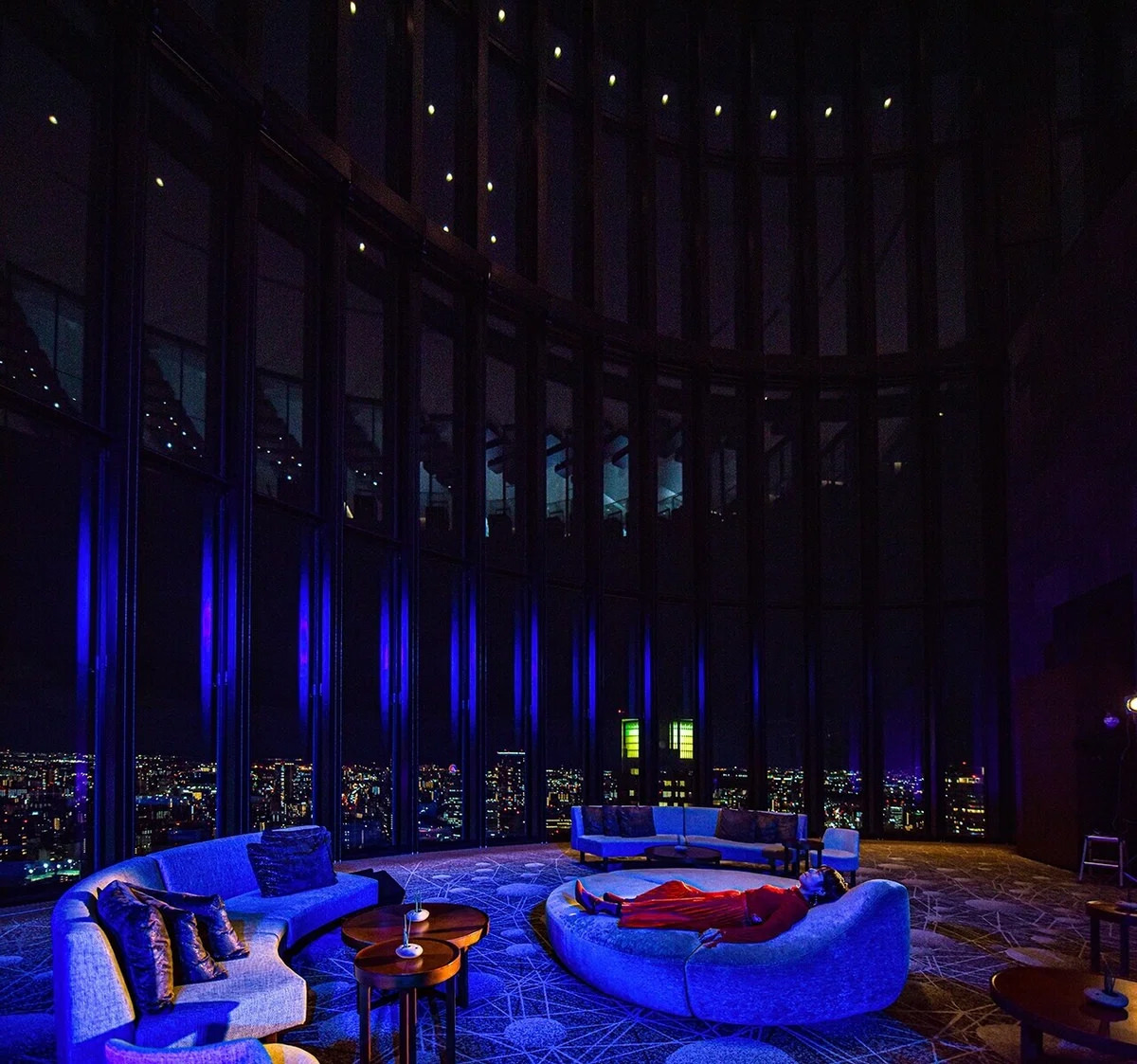
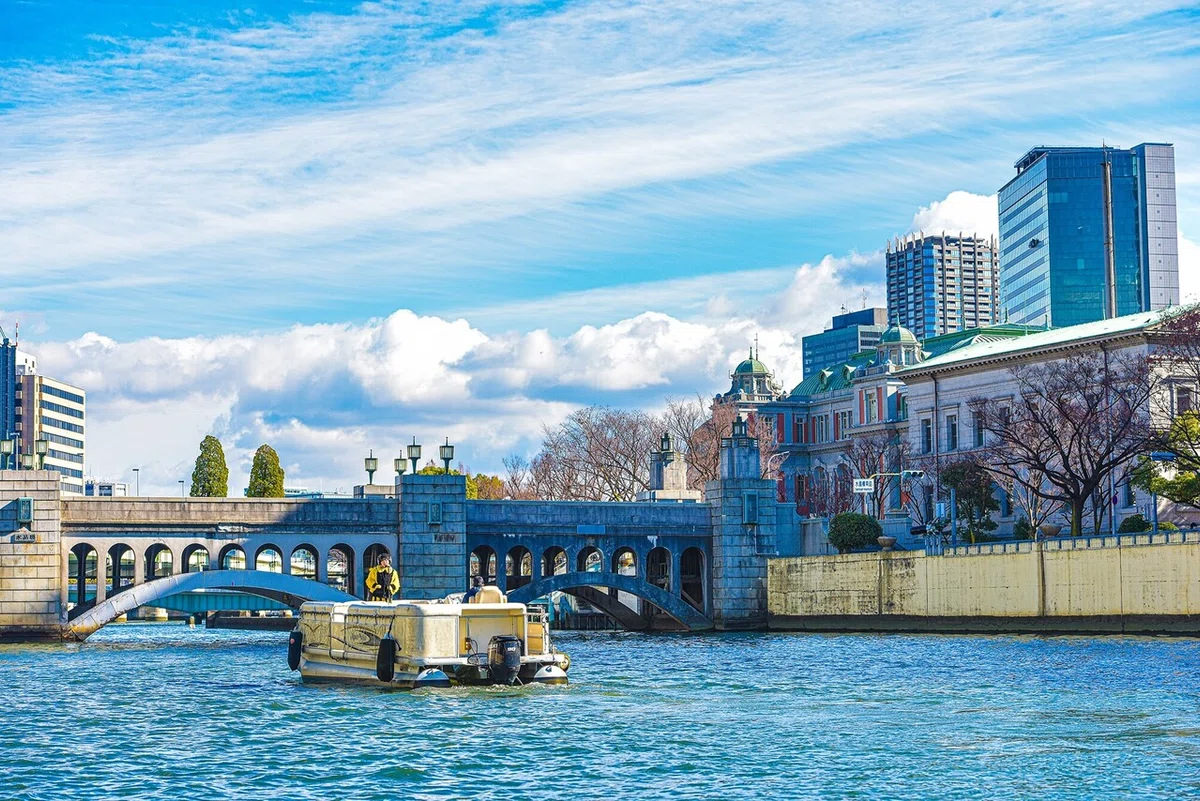
The stage of the third work "Water City" is the scenery of Nakanoshima with a view from the river. In the beautiful winter weather, the song performed on board was the piano solo "Gymnopédies" composed by Eric Saty in 1888.
According to Ukawa, this song, which is a loop track that is repeated endlessly, wanted to express the image of a river that continues to flow while constantly changing water.
And all the preludes and accompaniments of this work are based on the original solo by Salyu.
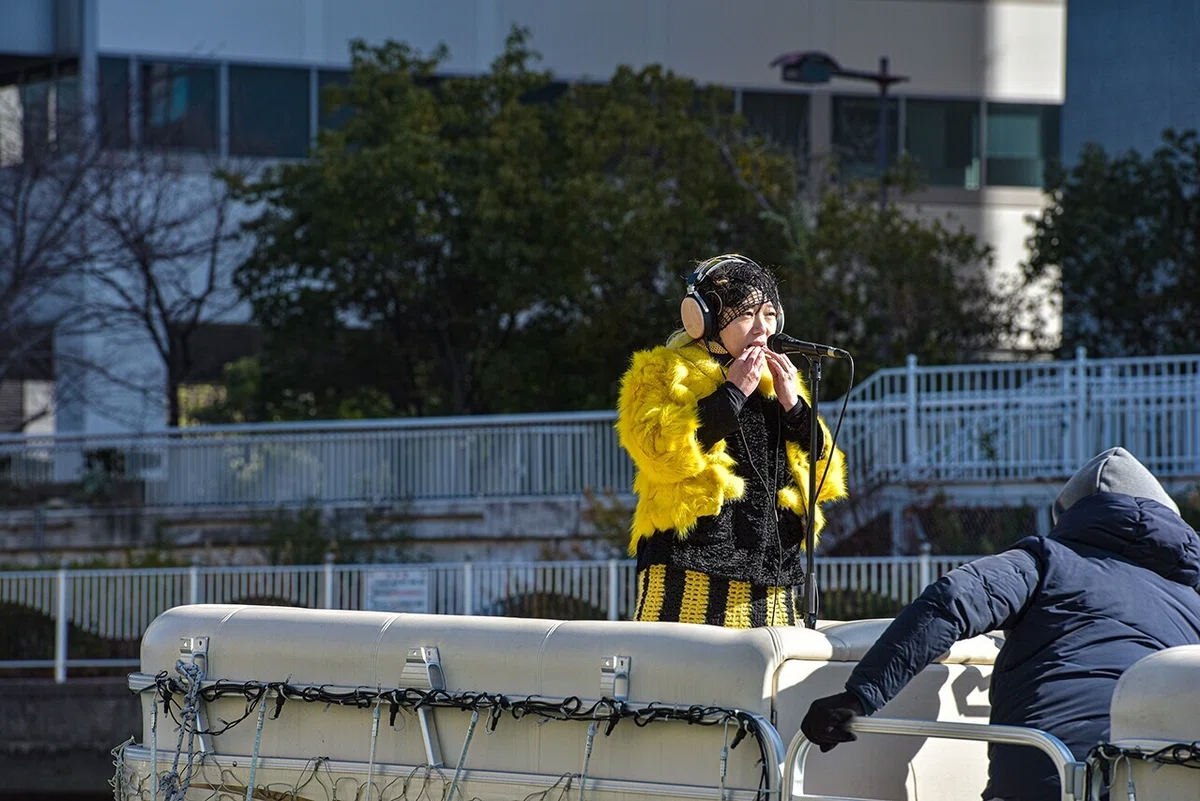
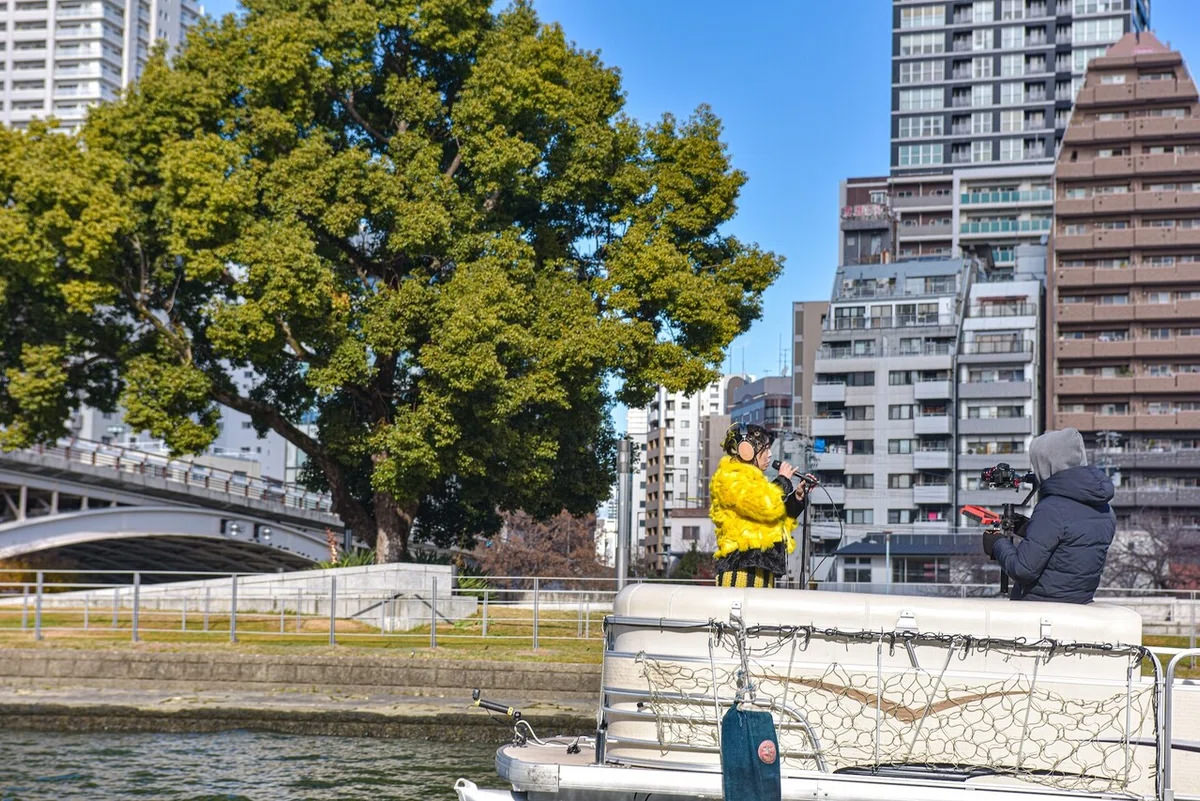
Following the field recording on the river surface, the song starts with a percussion that rings your teeth with your finger. Salyu's unique percussion seems to have repeated the image of "rain" as a blessing of the heavens and the earth that nurtures the river. After that, it was a wonderful creation that was overwhelmed by the wide range of expressiveness and voice diversity from Salyu's classical to contemporary music, which supplely resonated with the body.
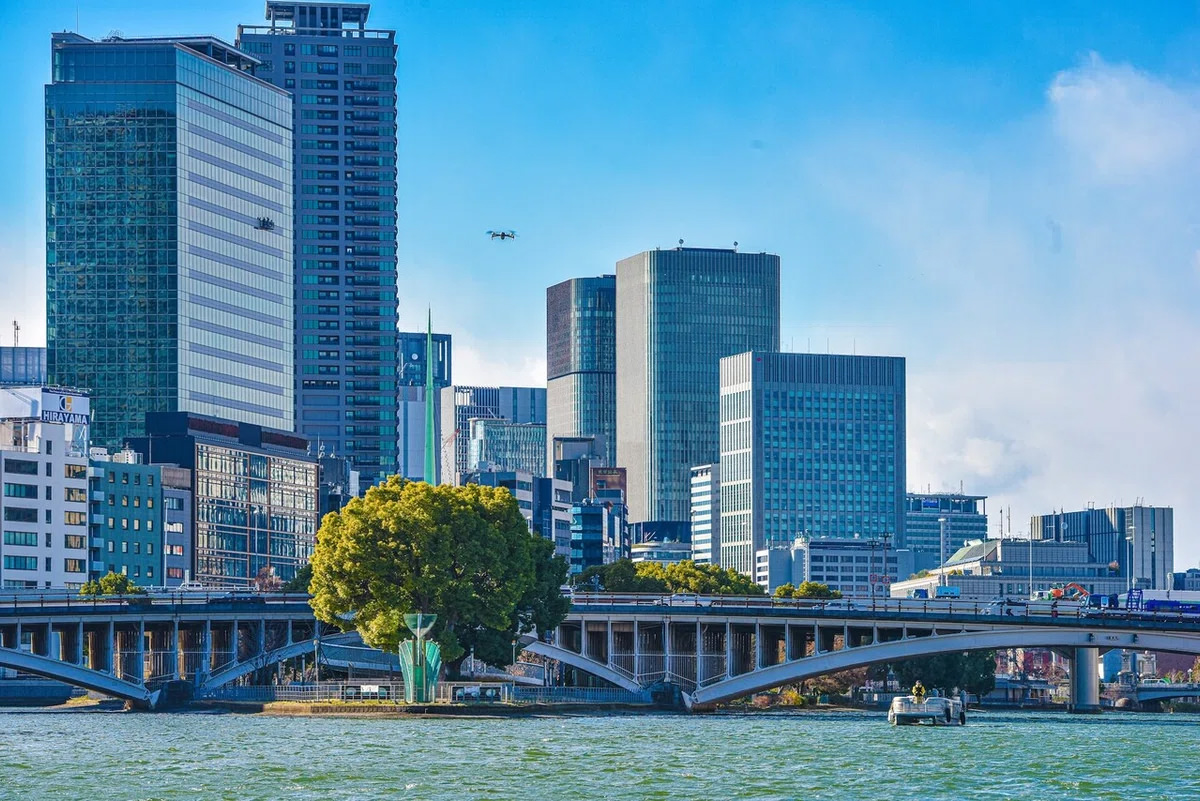
By the way, the memorable first step of the new proposal for urban promotion on the "Creative Experimental Island" is a documentary movie that mixes the current urban landscape of Nakanoshima and the creative wisdom of the artist, along with the improvisation of the composition while shooting and recording at each site.
We hope that this project will continue to bring out the charm and potential of Nakanoshima through creative experiments that are magnificent and unique, just like the flow of rivers and clouds in the sky.
Report writing: Chieko Kinoshita (Associate Professor, Co-Creation Division, The University of Osaka Co-Creation Organization)
Photo: Shun Yoshimi
[Archiving public]
The video of the entire talk is now available on the official YouTube channel. <High resolution version>, which allows you to set higher image quality (HD: 1080p) than at the time of delivery, has been newly released.
(As of February 23, 2021)
↓ Click here for the video
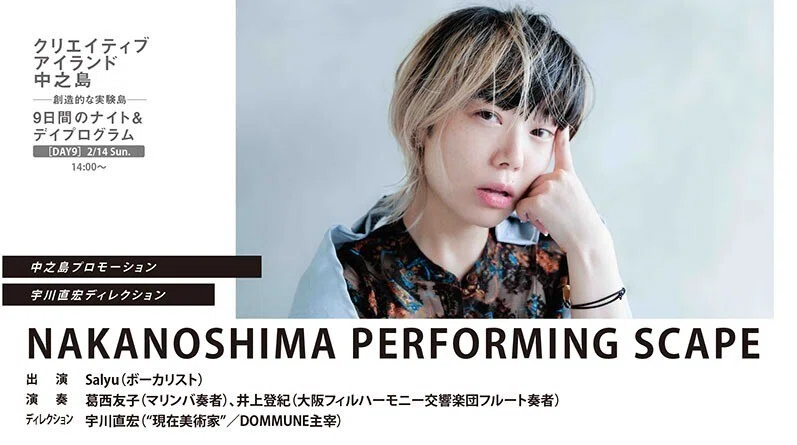
The project website is here:
Creative Island Nakanoshima Official Website
https://nakanoshimalab.jp/